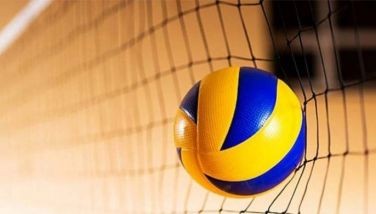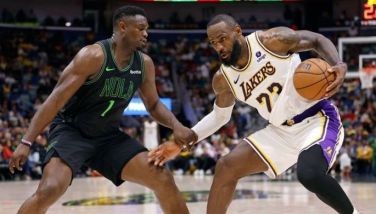Tackle football moving up
It has been a struggle for the American Tackle Football Association of the Philippines, or ATFAP the past two years. The fledgling organization encountered some initial resistance to the sport given its intense reputation and supposed high rate of injury in the United States. But since then, it has managed to attract many athletes from other sports as diverse as rowing, wrestling and basketball, like-minded individuals who see the opportunity to be part of something great that is starting to take off. Since 2010, football on all its forms has been experiencing a rebirth. In soccer, the Azkals became darlings of the media; in rugby, the Volcanoes have already made the World Cup. The ATFAP is hoping tackle football will be next to make the big leap.
On Sept. 24 and 25, the young national sports association hosted the 2016 IFAF Asia Flag Football Club Championship at the McKinley Hill Stadium. Seven teams from five countries took part: Japan, Korea, Vietnam, India, and the host Philippines.
“Last year, we were really looking at a way to introduce tackle football to a wider audience,” says Dodi Palma, head of the ATFAP, which also organizes the Pilipinas Aguilas national team. “For those who want to get to know the sport a little better, flag football is a great, non-contact way of learning the ropes.”
As a backgrounder, there are only a few countries in Asia that have taken up tackle football. This early, the Philippines is one of the most respected organizations that have just gotten organized. Japan is considered the powerhouse in the sport, while Australia has a well-organized professional league all over the country. The Philippines hosted a selection from Western Australian two years ago to get their feet wet in international competition, then played Japan in the Asian championships, and hosted a friendly with Korea. You have to understand the sheer number of players needed to play tackle football makes travel alone very expensive. At this state, the players and sponsors all chip in to help the sport out.
Day 1 of the tournament ended with the two Japanese teams, Bagus and Warriors tied with three wins and no defeats, while the other Philippine team Elite ended third with three wins and a loss at the hands of the younger and extremely athletic Warriors. The Philippines’ Timawa was fourth, due to a first game tie score against undermanned India. AFFI India and RMIT were in sixth and seventh, respectively, with no wins. Day 2 brought many surprises in the elimination round. Team Timawa started to get hot and took two straight wins against Vietnam and the powerful Japanese Warriors who were resting their starters before entering playoffs. Philippine Elite, meanwhile, bowed to the number one seed Bagus and ended up in fourth place for the seeding.
After five grueling elimination games, the two-day tournament was set to stage a showdown that everyone had been hoping to see – the two Japanese teams and two Filipino teams in the semifinals. No surprise … with well-rested starters from the Warriors against a tired Timawa team, the Warriors came firing away in their rematch. Timawa fought back in the middle of the game, but fatigue eventually overcame them and the Warriors quickly finished them off and earned a trip to the finals. The number 1 seed Japan Bagus and their quick, strong athletic players battled the fourth seed Philippine Elite, a much older team, back and forth with great plays and physical defense. Team Elite, headed by its veteran quarterback Nico Faller came firing away to his receivers, led by Edlen Hernandez, and ended the half with a two-touchdown lead. With pressure building from Bagus, Team Elite hammered away in the second half with dazzling offense and hard-nosed defense, and ending the winning streak of Bagus and barging into the finals.
As luck of the draw would have it, one Filipino team, Team Timawa, would be fighting against a Japanese Team Bagus for the bronze Medal, while the other would figure in the championship. The gold medal game would feature a contrast between the impressive Japan Warriors and the resilient Team Elite of the Philippines.
Not even lightning and thunder from overhead stopped a determined Team Elite from making sure that the trophy stayed in the country. Most Valuable Player Hernandez, Faller and Pereme Alina led the charge and made sure to keep their tired team focused on the task at hand. The almost perfect Japanese team seemed to wear out when the rains fell. That’s when the Philippine team took advantage of the situation – running away with a 39-26 victory.
“This marks a monumental step for the Philippines and ATFAP,” affirms Palma. “This is a sign that we aren’t just beginners learning the sport. We are serious contenders in Asia. It sends a message that we have come so far in so short a time.”
With their first international flag football event a success, and a gold medal haul, ATFAP has proven that the Philippines has a good chance to excel in this new sport. In less than three years, they have established a palpable presence in both tackle and flag football on the international stage. Amazingly, this was their first attempt organizing a flag event. ATFAP will now focus on the Flag Football National Team called Pilipinas Agilas set to partake in the 2017 IFAF Asia Flag Football National Championship in Japan. From baby steps to a big leap.
- Latest
- Trending































